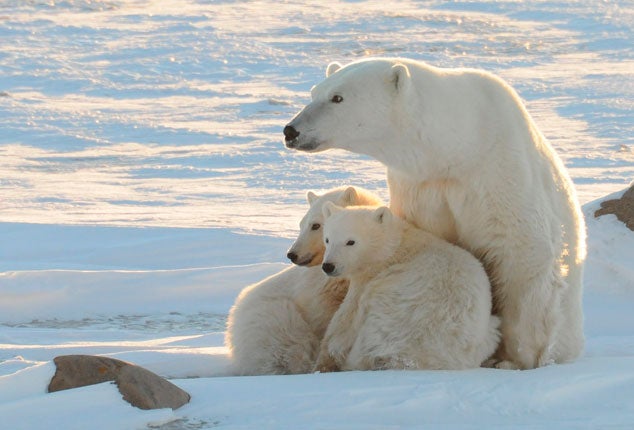
Your support helps us to tell the story
From reproductive rights to climate change to Big Tech, The Independent is on the ground when the story is developing. Whether it's investigating the financials of Elon Musk's pro-Trump PAC or producing our latest documentary, 'The A Word', which shines a light on the American women fighting for reproductive rights, we know how important it is to parse out the facts from the messaging.
At such a critical moment in US history, we need reporters on the ground. Your donation allows us to keep sending journalists to speak to both sides of the story.
The Independent is trusted by Americans across the entire political spectrum. And unlike many other quality news outlets, we choose not to lock Americans out of our reporting and analysis with paywalls. We believe quality journalism should be available to everyone, paid for by those who can afford it.
Your support makes all the difference.The mother of all polar bears lived in the British Isles about 100,000 years ago and she was not white but brown, according to a genetic study of the Arctic's biggest land predator.
Scientists have traced the maternal ancestry of modern polar bears to a female brown bear that lived in the vicinity of Britain and Ireland prior to the peak of the last ice age when polar bears and brown bears probably interbred regularly.
The discovery is of more than academic interest because in recent years hybrids of brown bears and polar bears have been spotted in the Arctic region. Biologists said that hybrids may therefore be crucial to the long-term survival of polar bears at a time when the Arctic sea ice is undergoing rapid melting during the summer months.
"We found that brown bears and polar bears, which are hybridising today in the wild, have been hybridising opportunistically throughout the last 100,000 years and probably longer," said Beth Shapiro of the Pennsylvania State University, who led the study published in the journal Current Biology.
"Generally, this seems to happen when climate changes force the bears to move into each others' habitat. When they come into contact, there seems to be little barrier to them mating," Dr Shapiro said.
The scientists collected DNA samples from the mitochondria – structures within the cells – of bear fossils from around the world. This enabled them to trace the evolutionary history of the maternal line of the bears and match it to geographical movements over time, which led to the mother of all polar bears.
Modern polar bears are bigger than brown bears and are adapted to a cold climate and a predatory behaviour that relies on long bouts of swimming between the ice pack.
Join our commenting forum
Join thought-provoking conversations, follow other Independent readers and see their replies
Comments